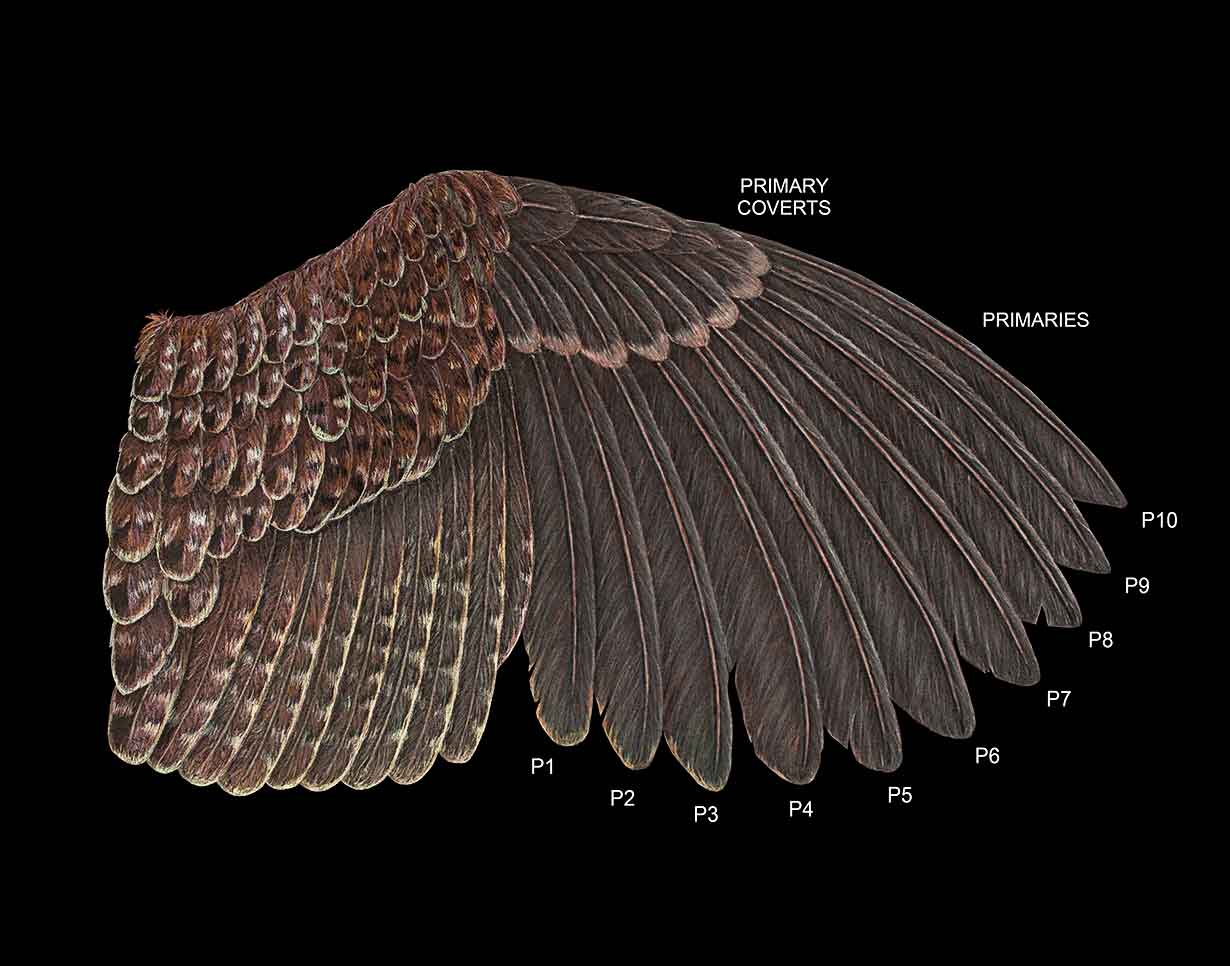Quail wing feathers can indicate a bird’s age, thus providing clues to maintaining high-quality habitat.
Enlarge

Illustration by Kellie Hayden
By Kellie Hayden
The features that make our favorite game birds so charismatic also provide details into the ages of these birds. When we read the clues that feathers hold, we can make smart decisions on maintaining high-quality habitat.
Feathers take time and energy to grow — two things young birds don’t have much of when they need to quickly learn how to forage, fly and evade predators. This means the first set of feathers that many birds are equipped with are not high quality, and it doesn’t take long for these feathers to become heavily worn. These ratty feathers can give us insight into the age of individual quail.
The outer flight feathers, called the primaries, are counted inward. The outermost primary is called P10, and the innermost primary is P1. Northern bobwhites molt their primaries starting with P1, working outwards to P10. Once P1-P8 are fully molted and replaced with adult feathers, bobwhites are considered over 150 days old. When looking at the primaries, you may see that your bird has retained one or more of their juvenile primaries. If this is the case, the innermost primaries will look sleek and strong (adult feathers), while one or two of the outermost primaries look heavily worn, dull and may even be broken (juvenile feathers yet to be molted).

Another important clue to reading your bird’s age lies in the primary coverts. These are the small feathers that cover the shafts of primaries. In bobwhites, juvenile primary coverts have light-colored tips. They may also resemble low-quality juvenile primaries in looking heavily worn. As bobwhites molt into their adult plumage, these light-tipped coverts are replaced by uniformly colored coverts. If your quail has primary coverts with uniformly light-colored tips, that’s a giveaway your bird is a juvenile. No buffy or white tips on the coverts indicates an adult. Examining both the primaries and primary coverts will give you the best insight into your bird’s age.
Why does aging birds matter? Data about the age of harvested birds can help inform land management practices. When managers have insight into the age of birds on the land they steward, they can better understand the health of breeding bird populations. This information can affect and even improve vital practices that maintain high-quality habitat, such as prescribed burns, grazing methods and seed mix selection.
And, it’s just fun to know!
Kellie Hayden is a writer, artist and bird-banding apprentice who is passionate about grassland habitat and conservation.
The post How to Age Quail In-Hand appeared first on Nebraskaland Magazine.
















